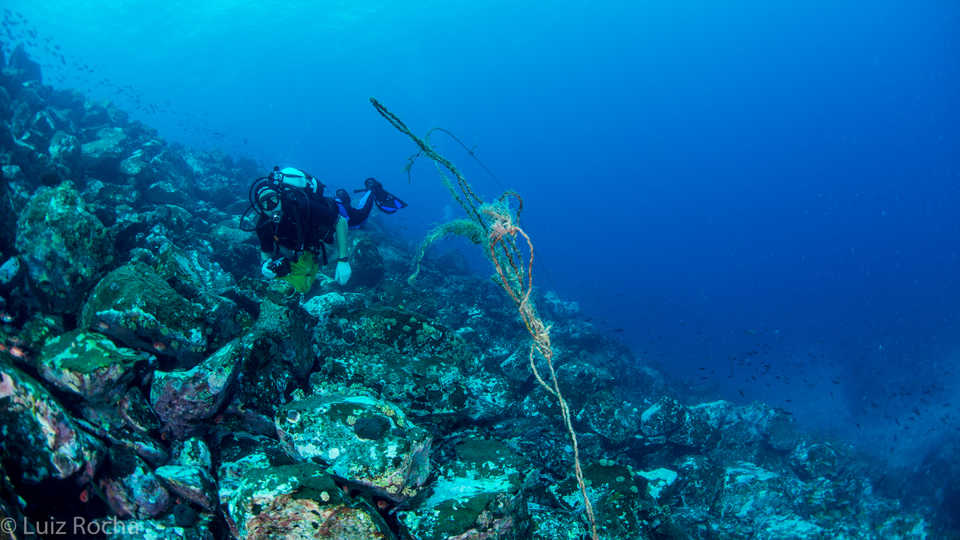We head out to the Tinhosas on a very calm day. This will be our longest boat ride, about 3 hours to get there and since this is one of the most isolated spots around here, we are hoping for great diving and large fishes! On our way down we pass by a curious island named “Jockey’s Hat” and we quickly see why the island bears that name, it looks exactly like a jockey’s hat scaled up thousands of times.
As we approach Tinhosa Grande (one of the two islets that make up the Tinhosas group), we are surprised to see a very small canoe with a crew of two fishing around it. The island is barren, there is no vegetation on sight, and we also see a small camp with one man. Gasparini asks our boat driver what the man is doing camping in the desolate island, and the answer is again surprising but not unexpected. He is salting fish. The small canoe has no room for a box with ice or a freezer (it barely has room for the three men and their catch), so their only option is to use salt to preserve the fish on site.
Renato jumps in on snorkel to find the best spot for diving, and delivers us bad news. The visibility is bad and he can’t find places with good coral cover for us to survey. We keep looking and decide to jump in at the calmest spot. When we descend, we are disappointed to see that the big fish are simply not there. We conduct as many surveys as possible, and after the dive we decide that we have enough data and we will do our second dive of the day on the way back at Jockey’s Hat. The diving there was again disappointing, and the lack of large fishes again bothered us.
We are surprised to see such clear signs of overfishing in an island with only ~7,000 inhabitants. We saw no sharks, and the few large fish were very scared, a tell tale of spearfishing. There are no marine protected areas in the island, and a part of our mission is to start a movement to create them. Tomorrow we have a meeting with ecotourism investors and local authorities to discuss exactly that, and I will report the results of the meeting on our next and final blog of this expedition.
This expedition was funded by the California Academy of Sciences, William K. Bowes, Jr. Foundation, Roça Belo Monte Hotel and Rufford Foundation.


